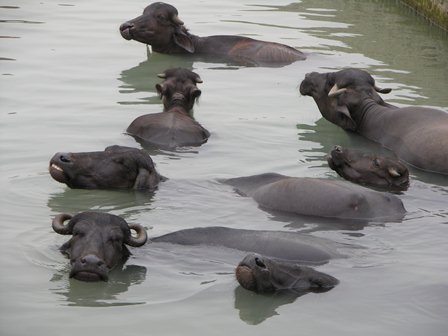The domestic water buffalo Bubalus bubalis, belongs to the family Bovidae, sub-family Bovinae, genus bubalis and species arni or wild Indian buffalo (Chantalakhana and Falvey, 1999). Buffalo are classified into two distinct classes: swamp buffalo and river buffalo.
Swamp Buffaloes
The swamp type is most common in Southeast Asia where it is mostly employed as a draught animal, particularly in rice cultivation. It has derived its name from the natural habitat which is swamp or marshland. Swamp buffaloes resemble the wild arni in morphological characteristics. Recently, its potential as a meat producer has been discovered. Some strains of the swamp type are larger than others, but there are no distinct breeds. Swamp buffaloes have a very low milk yield and are not used as milk producers. However, crossings between river and swamp buffaloes have been attempted in Thailand, Philippines, Vietnam, and China on a large scale. These crossbred buffaloes are powerful work animals, and produce good quality meat and more milk than the indigenous buffaloes

River Buffaloes

